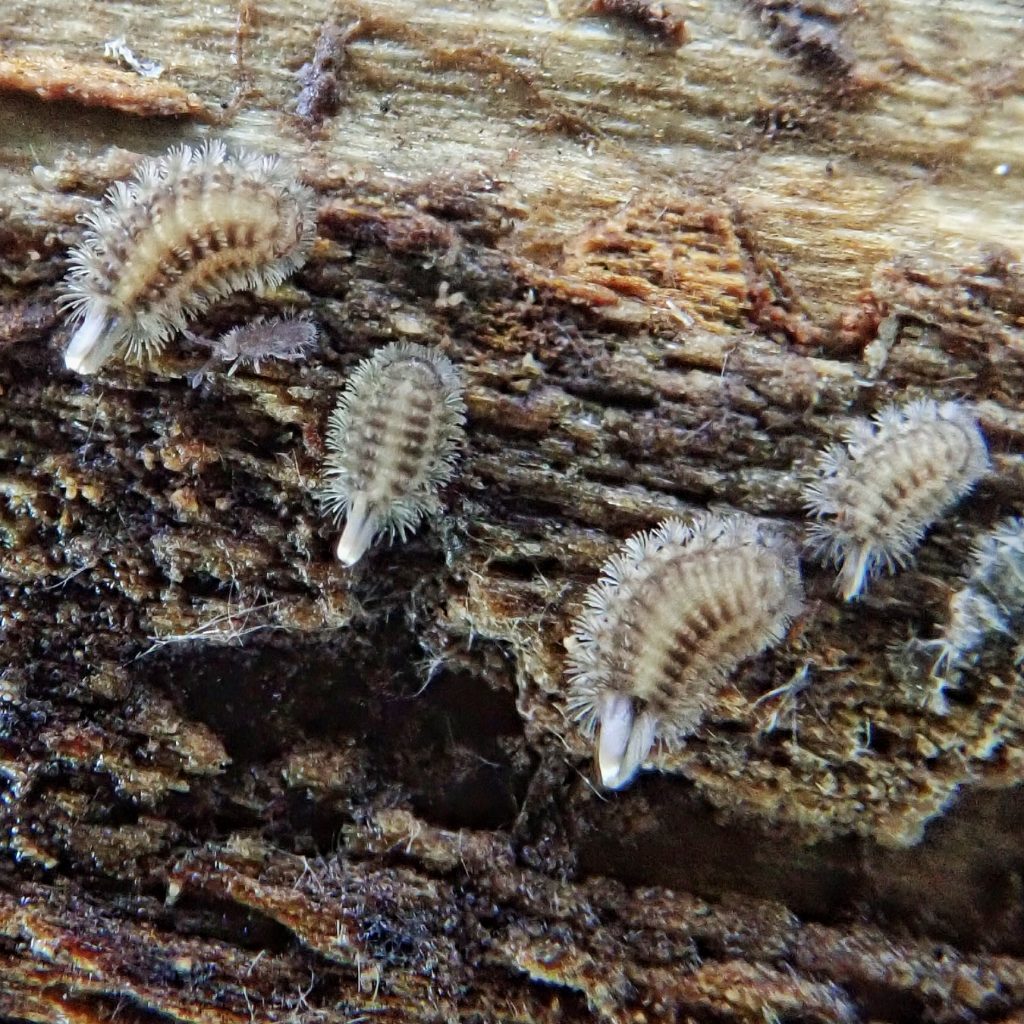
It appears that Polyxenus is the only western North American genus in the order Polyxenida, and it is beyond my scope to positively identify these beyond genus. Not only can I not find a key to the species of Polyxenus, but the genus is in need of revision, and it is probable that there are undescribed species in our region that would belong to that genus. The only named species that have been found in our region are P. pugetensis and P. lagurus, and there are doubts that North American P. lagurus are in fact the same species as the European ones originally described by Linnaeus in 1758. William Shear says the color pattern matches P. pugetensis, but “…The question is, is pugetensis all one species with a diagnostic color pattern, or is the pattern shared with other, cryptic species?”
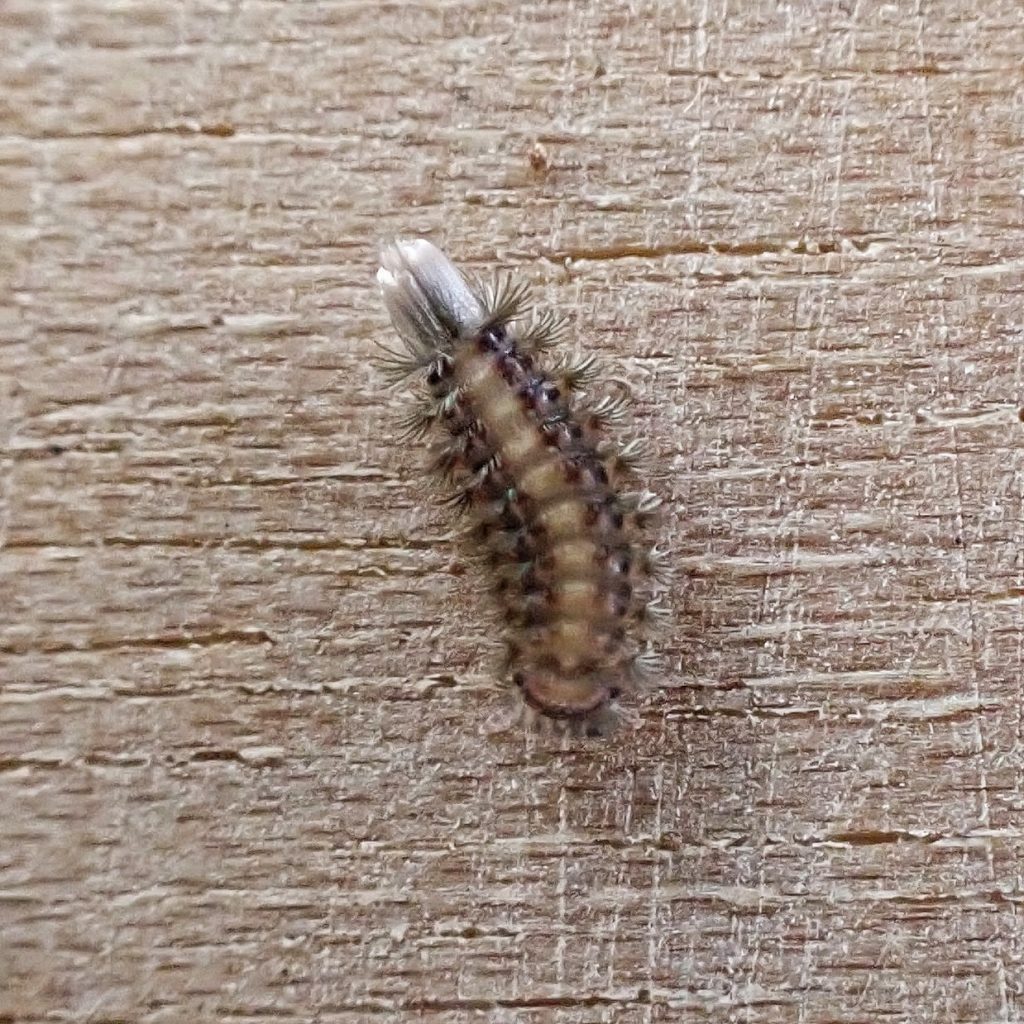
These are tiny millipedes (the largest of these was 2.6mm) and easy to overlook. But under magnification they are quite handsome, with their bristles (trichomes) arranged in rosettes of compelling symmetry. The purpose of these trichomes (which, along with an uncalcified cuticle, are unique and diagnostic to Polyxenida) are not specifically known. My guess would be that the bristles along the dorsal surface aid in water retention, and that the lateral rosettes either act as sensory organs, or condense water from the air. Polyxenus lagurus has been shown (Wright/Westh; 2006) to be able to absorb water vapor from the air (possibly through a cryptonephric system designed to extract water from feces), and I wonder if the bristles may help raise the humidity around the millipede. But I have read nothing verifying my hypothesis.
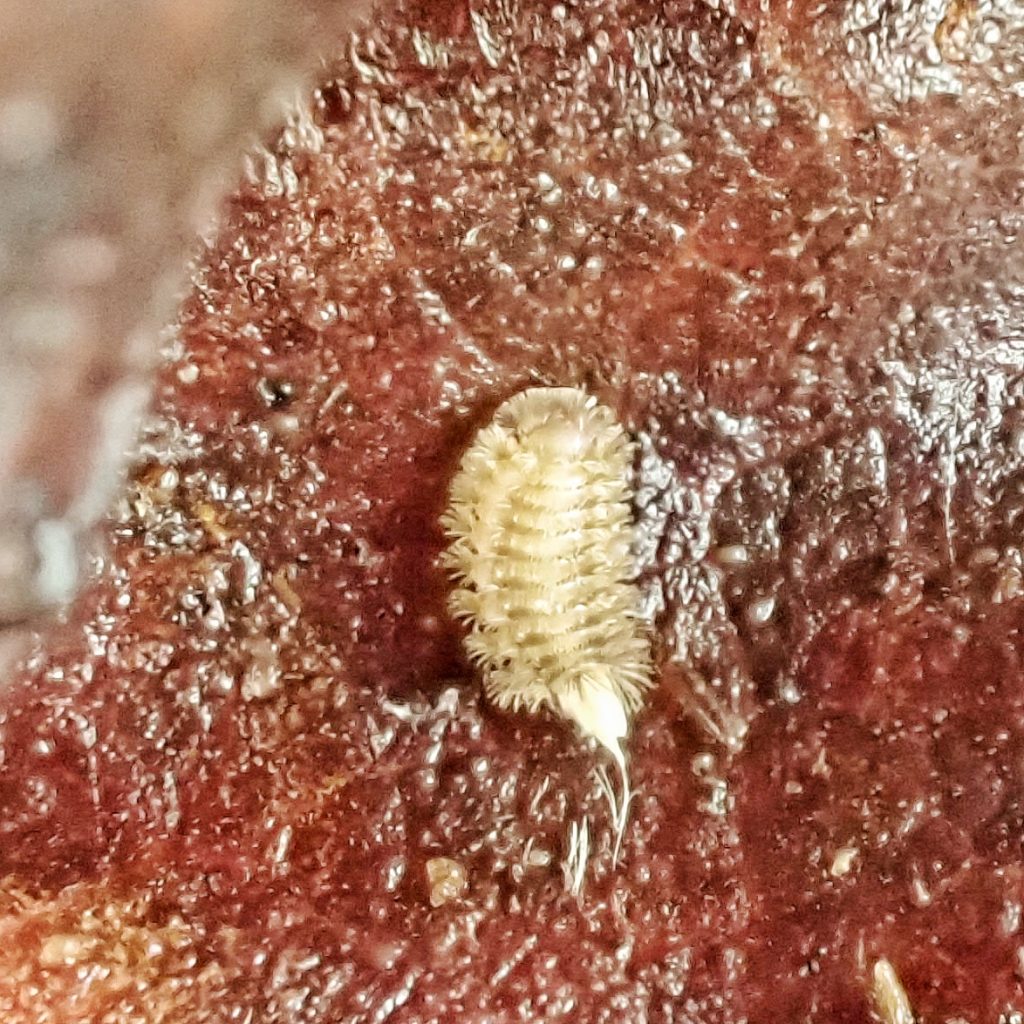
Unlike most other millipedes, polyxenids do not have chemical defenses. Instead, the long, straight bristles that form a sort of bifurcate tail (caudal tufts) function as a defense mechanism. They are barbed and hooked, and detach easily from the posterior of the millipede. When threatened the polyxenid attempts to present its rear end to the attacker (which are often ants, as well as a variety of other arthropods), with the hope that it will become entangled in those trichomes and lose its mobility. Sometimes this ploy works very well, and ants have been found wrapped in the trichomes and dead of starvation. These tufts are regenerated with (and their loss may stimulate) each successive moult.
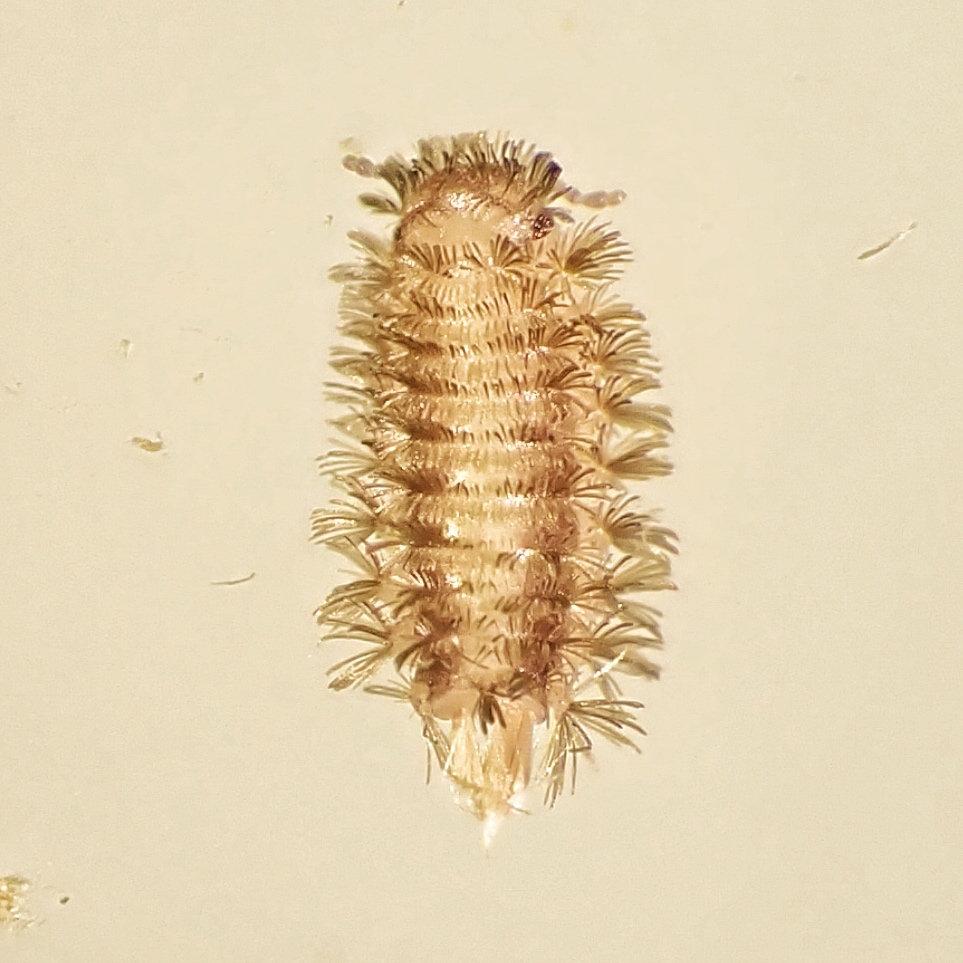
Though some populations of Polyxenus sp. are known to be thelytokous (a form of parthenogenesis wherein the unfertilized eggs produce only females), that reproductive behavior is not known to occur in our region. Instead the males of our polyxenids spin thin threads and decorate them with drops of sperm. They also deploy two angled, pheromone scented, guide threads, with the hope that they will direct an interested female onto those drops. Fertilization happens as the eggs pass through the sperm during ovipositing. The females glues the eggs to the substrate with sticky secretions, and also glues bristles from the caudal tufts to the eggs.
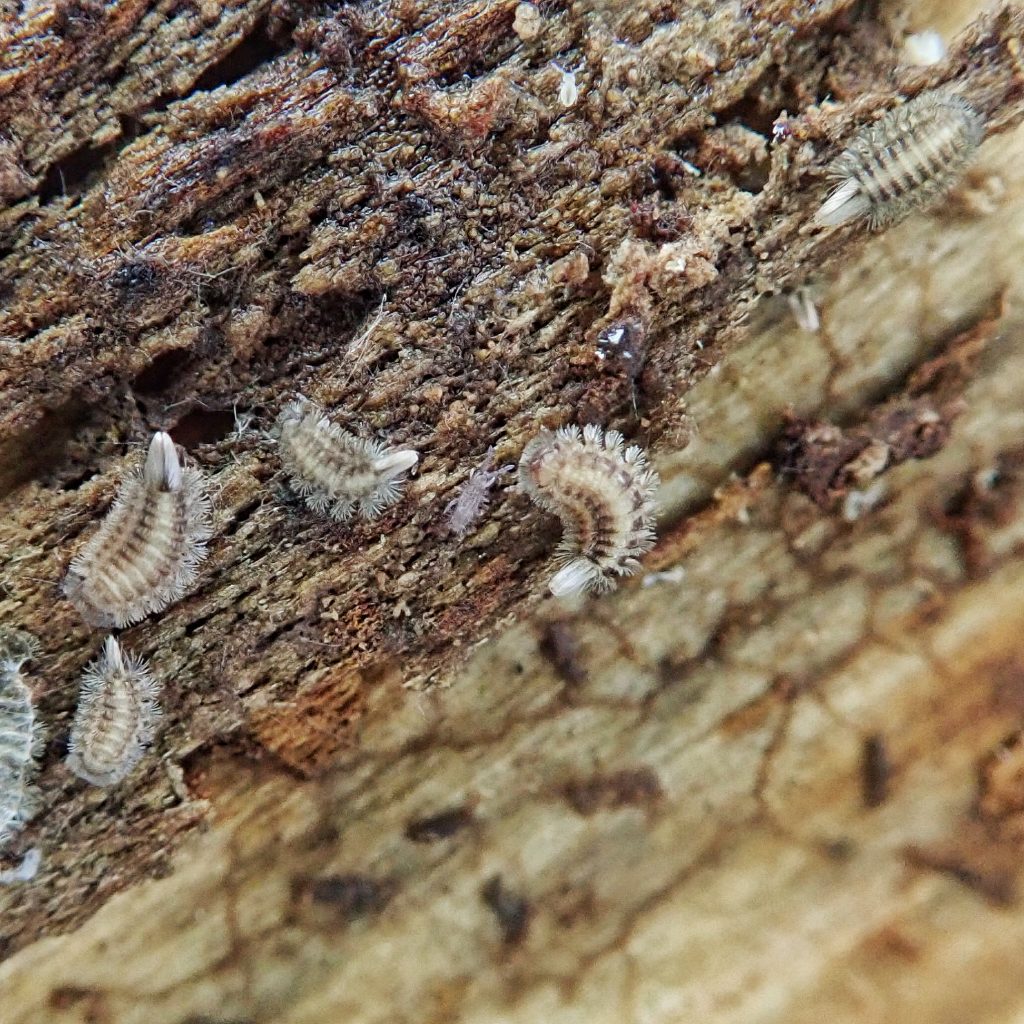
You really have to be looking close to find these cool little critters in the wild, although I’ve read about them doing home invasions during very dry periods. I use a headlamp (not a lot of light on the forest floor of the wintertime woods) and sometimes couple that with a stamp collector’s magnifying visor. I’ve only found them twice (once behind the bark of an alder snag, and most recently pawing through leaf litter), but both times it was the highlight of my day!
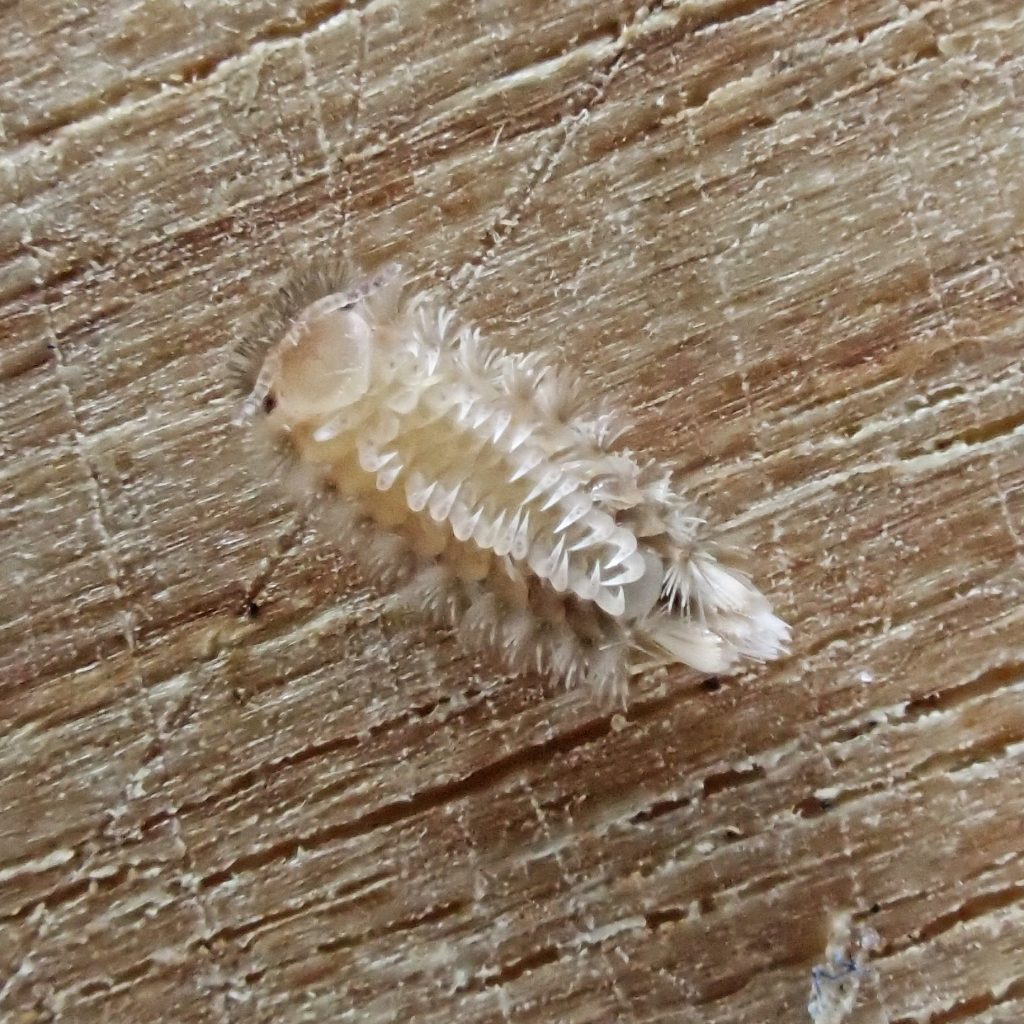
Description– Small (less than 3mm, including caudal tuft) millipedes that are tan in the mid-dorsal region and darker brown along the margins, with two rows of short trichomes on each segment, rosette shaped tufted bristles on the margins, and long, fine bristles in two bundles at the posterior end.
Similar species-I don’t know how to differentiate the Polyxenus sp., but no other millipedes have bristles like these; dermestid beetle larvae do not have lateral rosettes of trichomes.
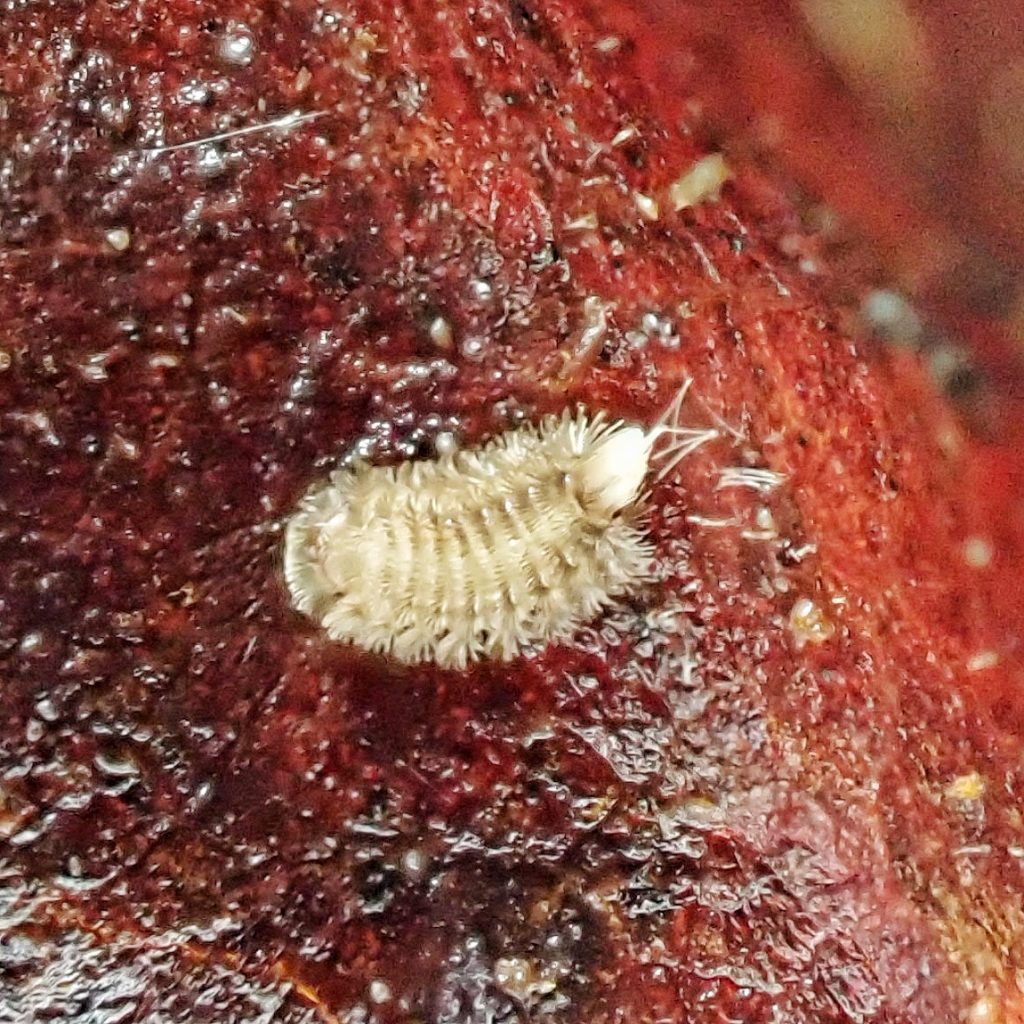
Habitat-Under bark and in leaf litter
Range–Polyxenus are found throughout the Northern Hemisphere, and in Australia; P. pugetensis is only found in the PNW, and appears to be most common west of the Cascades.
Eats-Microorganisms, algae, lichens, possibly fungal spores and myxogastria.
Eaten by-Ants, beetles, pseudoscorpions, and probably any other insectivore that can find them.
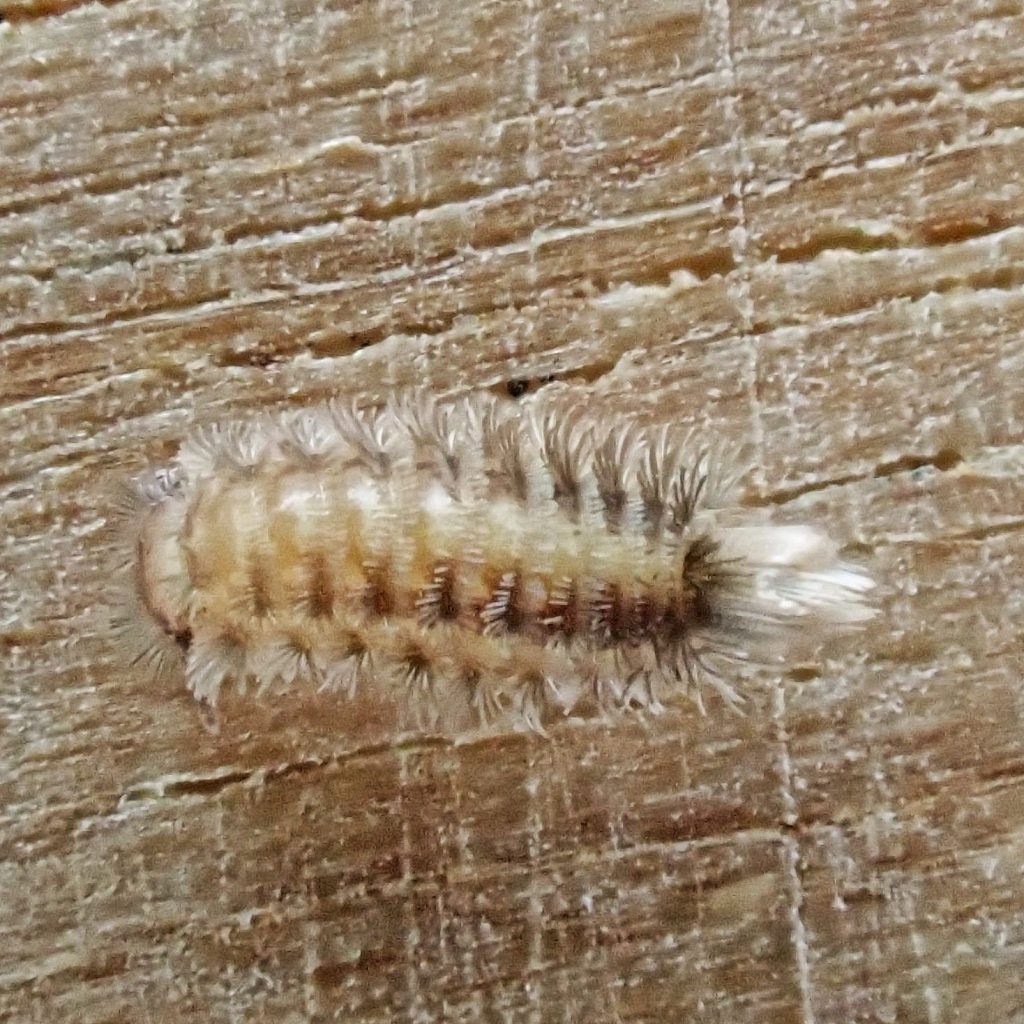
Adults active-Possibly year around, but deep in cover during the driest and coldest months.
Life cycle-Probably goes through about 7 moults, taking a total of around 10 months; total lifespan may be up to 18 months; possibly bivoltine in our region, with breeding in spring and fall.
Etymology of names–Polyxenus appears to be from the Greek words for ‘very strange’, and that seems appropriate for this genus, at least in comparison with other millipedes. The specific epithet pugetensis refers to the type specimen being found near the Puget Sound.
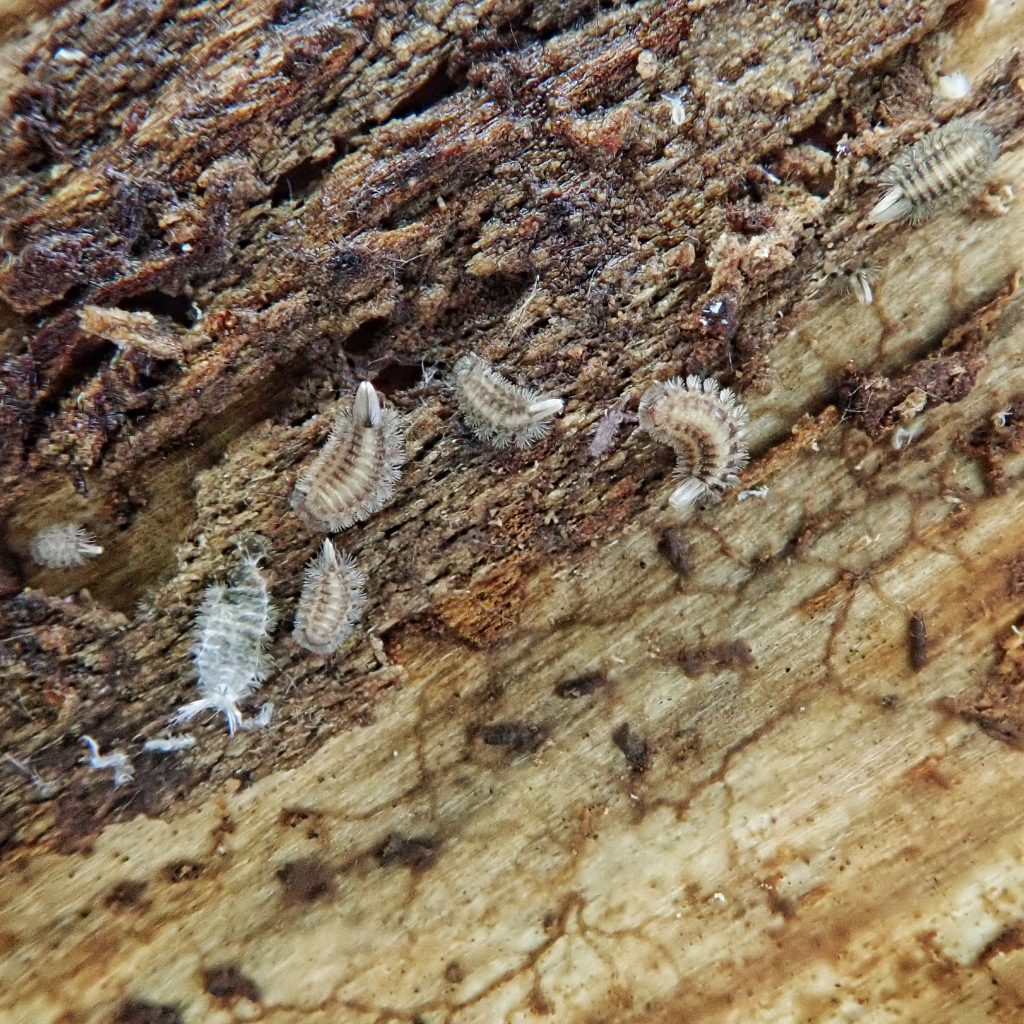
https://bugguide.net/node/view/97419
https://www.britannica.com/animal/Polyxenus
https://www.pnas.org/content/pnas/93/20/10848.full.pdf
https://webdoc.agsci.colostate.edu/bspm/ArthropodsOfInterest/DuffMillipede2018.pdf
Kansas School Naturalist – Vol 45, No 3 – Centipedes and Millipedes with Emphasis on N America Fauna
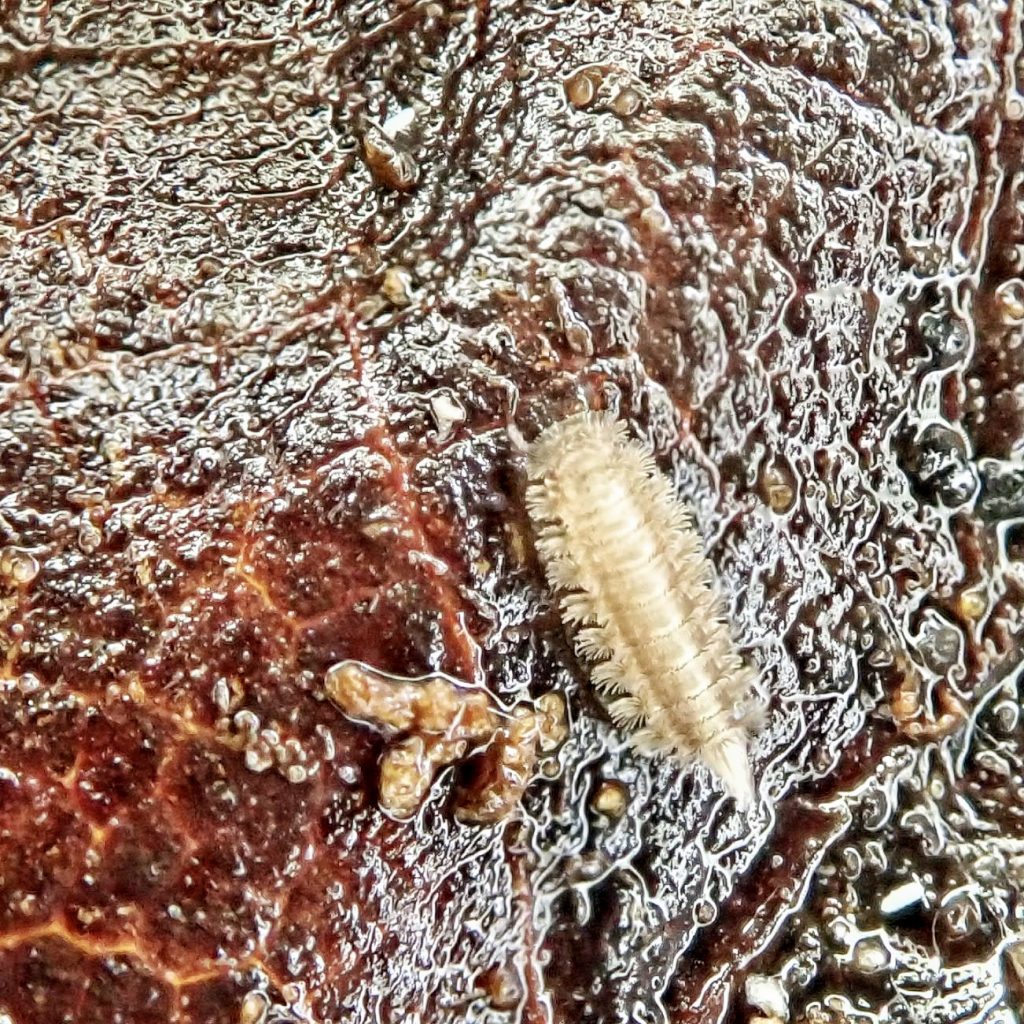
The first and second photos in your sequence look very much like varied carpet beetle larvae. I’m in no way doubting your ID as Polyxenus. On carpet beetles I’ve always assumed the placement of hairs was defensive. They are next to impossible to pick up without forceps.
They do look similar! But dermestids don’t have the rosettes of lateral setae, and the twin tails of long, very fine, setae. These guys are equally impossible to pick up by hand!
Great read. Found it similarly difficult to accurate differentiate between species within the genus. I have about 20 of these guys still going strong in my closed loop terrarium ecosystem. I think I have this specific type. (Bellingham WA) Thx for the info.
Thanks for your appreciation, Adam! What are some of the other plants and animals in your terrarium?